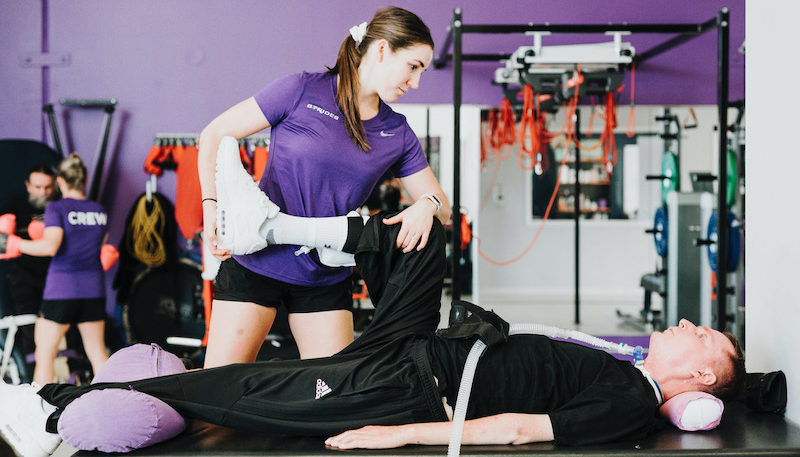
The Intensive Rehabilitation Trial (Rehabilitation Trial 1) funded by PCSRF was conducted in 2021.
This clinical trial was needed to determine whether an intensive program of rehabilitation was suitable for people living with chronic spinal cord injury. As rehabilitation is an essential part of the overall cell transplantation therapy, it is important that the rehabilitation program is tested and any areas that can be improved are addressed and implemented. This helps to de-risk the overall cell transplantation therapy that the Spinal Injury Project team are working towards.
The rehabilitation program for this trial included (1) an onsite program at the spinal cord rehabilitation specialist providers Making Strides, with 2 hours of rehabilitation plus 30 minutes of functional electrical stimulation each day, for 5 days a week, for 16 weeks, and then (2) an at-home program of one hour a day, 5 days a week for 10 weeks using a more restricted range of activities.
While the primary aim of the trial was to determine whether the intensive trial was suitable for people living with chronic spinal cord injuries, a secondary aim was to determine whether participants showed changes in health and functional capacity.
Five participants were recruited for the trial with a mix of males/females, thoracic and cervical injuries, and recent and longer-term injuries. All participants lived within one hour’s travel time from Making Strides at Burleigh.
Trial Outcomes:
• Participants reported high satisfaction with the on-site program, but reported that the at-home program was not suitable as it was difficult to achieve the desired outcomes.
• Some participants had improvements in functional activity, while others did not have much change. This demonstrates that spinal cord injuries are all different and that it is important that the cell transplantation trial helps identify participants who might respond to the therapy versus those who may not respond. This information will then help the research team to work out how to change the therapy to help those whose injuries may not otherwise respond.
• There were few adverse events and all were minor, which demonstrates that the rehabilitation program is safe and suitable for people living with spinal cord injury.







